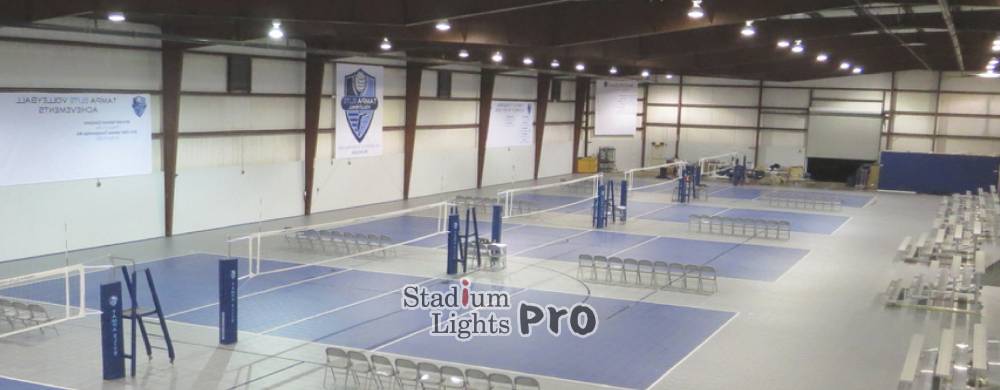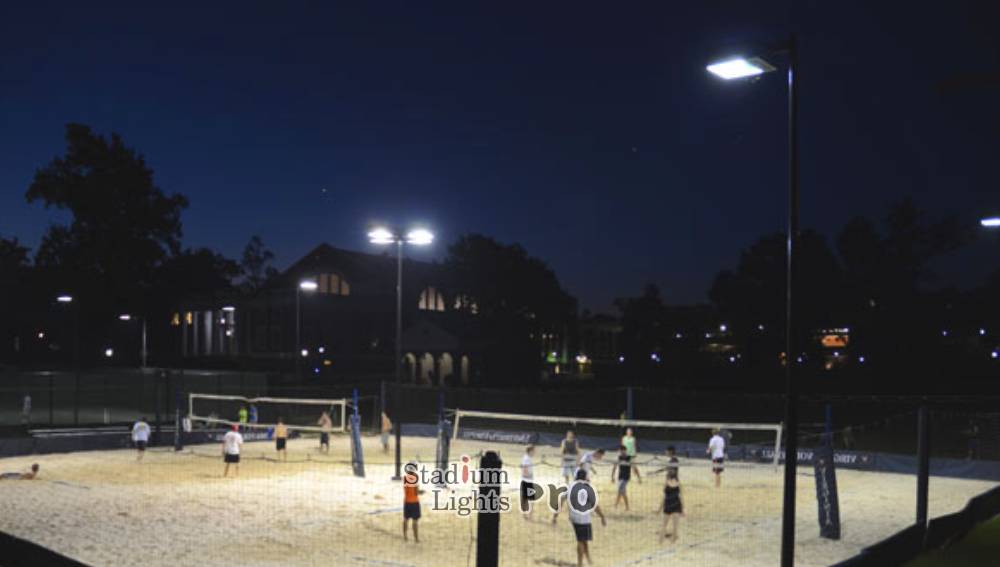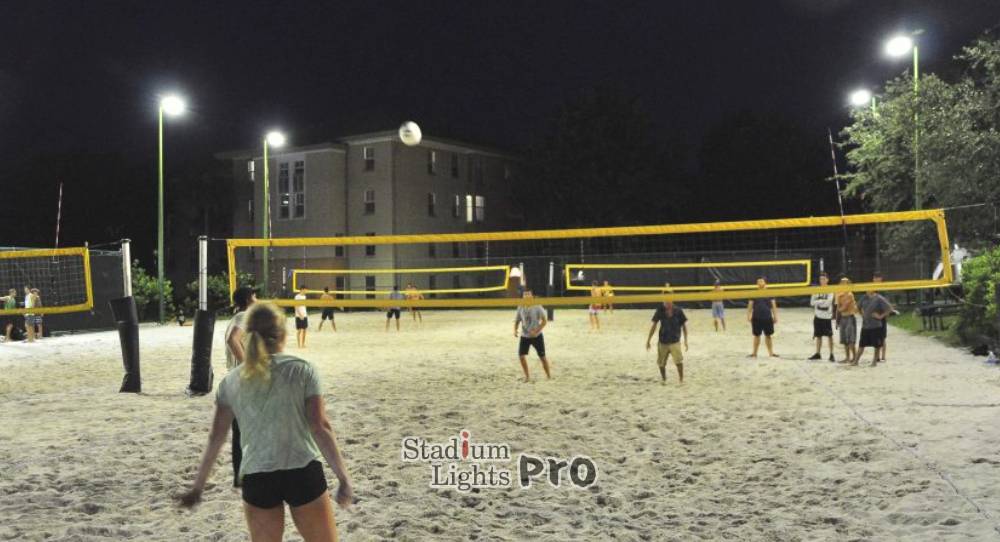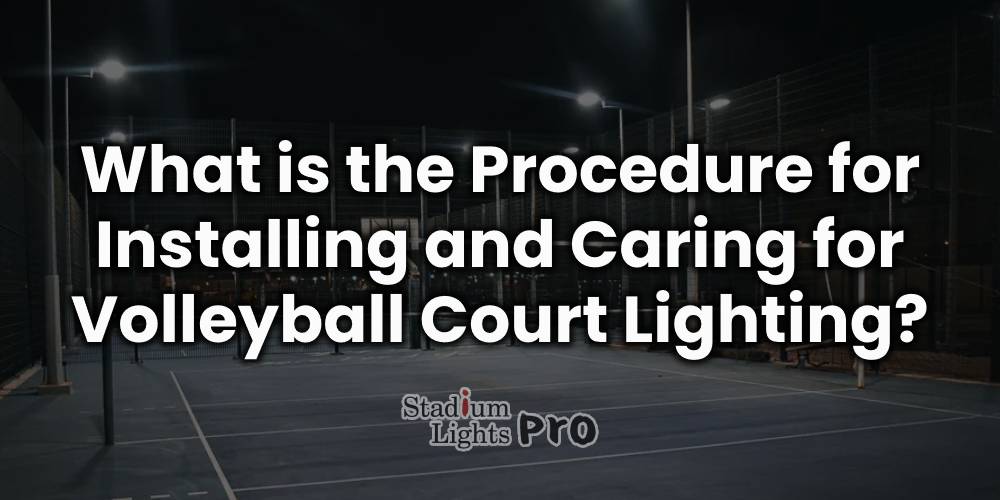Lighting is a fundamental component of any volleyball court, whether it is indoors or outdoors. Properly designed lighting enhances visibility, creates an inviting atmosphere for players and spectators, and contributes to the overall experience of the game. The procedure for installing and caring for volleyball court lighting encompasses several phases, including planning, installation, and maintenance. Each phase is vital to ensure optimal performance and longevity of the lighting system.
Table of Contents
TogglePlanning for Volleyball Court Lighting Installation
Effective planning lays the groundwork for a successful lighting installation. It involves assessing the specific requirements of the volleyball court and determining the best approach for lighting design.
Assessing Lighting Requirements
Determining the appropriate lighting levels for a volleyball court is a primary concern. Indoor courts typically require illumination levels between 300 and 500 lux to ensure players can see the ball clearly and maintain safety. For outdoor courts, the illumination needs may vary based on the time of day, surrounding light sources, and event types. Conducting a thorough analysis of the lighting requirements can guide the selection of fixtures and configurations.
Evaluating Fixture Placement
The placement of lighting fixtures directly influences the quality of illumination. Proper positioning minimizes shadows and glare, allowing players to focus without distractions. For indoor courts, fixtures are generally mounted on the ceiling or rafters to provide broad coverage and reduce obstruction. In outdoor settings, poles may elevate fixtures above the court to ensure adequate light distribution.
Selecting Suitable Lighting Fixtures
Choosing the right lighting fixtures is paramount. LED fixtures are increasingly preferred due to their energy efficiency, longevity, and ability to produce high-quality light. Several factors should be considered when selecting fixtures, including wattage, color temperature, and beam angle.
Wattage impacts brightness and energy consumption, while color temperature, measured in Kelvin, affects the ambiance. A warmer temperature creates a cozy atmosphere, whereas a cooler temperature mimics daylight and enhances visibility. The beam angle determines the concentration of light, with narrower angles focusing light on specific areas and wider angles providing broader coverage.
Creating a Lighting Design Plan
After evaluating requirements and selecting fixtures, a lighting design plan should be developed. This plan should outline the layout of fixtures, their spacing, and expected light levels at various court locations. Using lighting design software can assist in visualizing the final product and ensuring the plan meets performance specifications.

Installing Volleyball Court Lighting
Once the planning stage is complete, the installation process can begin. Proper installation ensures the functionality and safety of the lighting system.
Preparing the Installation Site
Preparing the installation site is the first step. This involves clearing any obstructions, ensuring easy access to electrical systems, and confirming that the mounting points are structurally sound. A clean and organized workspace enhances the efficiency of the installation process.
Electrical Considerations
Connecting lighting fixtures to the electrical supply is a vital aspect of the installation. Depending on local regulations, hiring a licensed electrician for electrical connections may be advisable. The wiring must be appropriate for the load of the fixtures and comply with local electrical codes. Installing dedicated circuit breakers can help prevent overloads and enhance safety, ensuring that each fixture is connected to a circuit that can accommodate its wattage.
Incorporating control systems, such as dimmers or timers, provides flexibility in managing the lighting according to specific needs and events. These controls can optimize energy use and improve the overall lighting experience.
Mounting the Fixtures
With electrical connections in place, the next step is mounting the lighting fixtures. This involves using appropriate hardware to secure the fixtures to their designated locations. Following the lighting design plan allows for accurate positioning. Using adjustable mounts can help fine-tune the angles for optimal light distribution.
Once the fixtures are securely fastened, it is crucial to check that they are stable to prevent movement or loosening over time. Regular checks can help ensure that fixtures remain secure.
Testing the Lighting System
After all fixtures are installed, testing the lighting system is essential. This process involves turning on the lights and checking for uniformity in illumination, flickering, or inconsistencies in light distribution. Adjustments may be necessary to optimize performance. It is also beneficial to test the system under various conditions, such as different times of day and weather scenarios for outdoor courts.
Caring for Volleyball Court Lighting

Ongoing maintenance is vital for ensuring the longevity and consistent performance of the lighting system. Establishing a routine maintenance schedule can help prevent issues before they arise.
Conducting Regular Inspections
Regular inspections of the lighting system are necessary to identify and address any potential issues. Checking for burnt-out bulbs should be a priority, as prompt replacement prevents uneven lighting and maintains visibility. It is also important to verify that all fixtures remain securely mounted to minimize accidents or disruptions during play. Inspecting electrical connections for wear, corrosion, or damage can help prevent electrical failures.
Cleaning the Fixtures
Accumulation of dust, dirt, and debris on lighting fixtures can reduce their light output. Regular cleaning enhances efficiency and brightness. Using a soft cloth and non-abrasive cleaners can effectively remove grime. For outdoor fixtures, cleaning after storms or extreme weather conditions is advisable to maintain optimal performance.
Adjusting and Realigning Fixtures
Environmental factors such as wind or vibrations may cause fixtures to misalign over time. Regular checks and adjustments ensure that fixtures are aimed correctly for optimal light distribution. Proper alignment reduces the likelihood of glare and shadows, enhancing visibility during play.
Replacing Outdated Technology
As technology advances, older lighting fixtures may become less efficient or effective. Periodically assessing the performance of the existing system can guide decisions on whether to upgrade to newer technology. Modern LED fixtures, for instance, offer greater energy efficiency and improved light quality compared to older technologies. Evaluating options for upgrading can lead to long-term savings and improved performance.
Safety Considerations in Installation and Maintenance
Safety remains paramount throughout the installation and maintenance processes. Ensuring compliance with local regulations and safety standards helps minimize risks.
Engaging Qualified Professionals
Hiring qualified professionals for installation and electrical connections can prevent potential hazards. Verifying the credentials and experience of contractors is advisable to ensure they are equipped to handle the specific requirements of lighting installation.
Adhering to Safety Standards
Following safety standards and best practices during installation is crucial. Utilizing personal protective equipment (PPE) and ensuring that electrical work adheres to local codes can prevent accidents. Implementing lockout/tagout procedures during maintenance is also advisable to avoid accidental energization of the system.
Providing Adequate Training
For facilities that frequently operate volleyball courts, training staff on proper lighting maintenance and troubleshooting enhances overall management. Knowledgeable staff can identify issues early and respond appropriately to maintain optimal performance.
Environmental Considerations
The choice of lighting fixtures has environmental implications. Opting for energy-efficient fixtures, such as LED lights, reduces energy consumption and greenhouse gas emissions. Many regions offer incentives for upgrading to energy-efficient lighting systems, enhancing sustainability efforts.
Recycling and Disposal
When replacing lighting fixtures, environmentally friendly disposal methods should be considered. Many components of lighting fixtures, such as glass and metal, can be recycled. Checking local regulations for the proper disposal of electronic waste ensures that old fixtures do not contribute to landfill waste.

Monitoring Energy Consumption
Implementing systems to monitor energy consumption helps facilities understand the impact of their lighting on overall energy use. Tracking usage patterns can identify opportunities for further efficiency improvements. By monitoring energy consumption, facilities can adjust practices to reduce costs and environmental impact.
Cost for Installing and Caring for Volleyball Court Lighting
The financial aspects of installing and maintaining volleyball court lighting can vary significantly depending on various factors. Understanding these costs helps facility managers and decision-makers allocate budgets effectively and plan for long-term maintenance.
Factors Influencing Costs
Several factors contribute to the overall cost of installing and caring for volleyball court lighting. These include the type of lighting fixtures selected, the size of the court, the complexity of the installation, and ongoing maintenance expenses. Below is a detailed breakdown of these costs.
Initial Installation Costs
The initial installation costs encompass purchasing fixtures, electrical components, labor, and additional materials required for installation. The following table summarizes these expenses.
| Cost Component | Estimated Cost Range (USD) |
|---|---|
| Lighting Fixtures | $5,000 – $15,000 |
| Electrical Work | $2,000 – $7,000 |
| Installation Labor | $1,500 – $5,000 |
| Control Systems | $1,000 – $3,000 |
| Miscellaneous Materials | $500 – $2,000 |
| Total Estimated Initial Cost | $10,000 – $32,000 |
Ongoing Maintenance Costs
After installation, ongoing maintenance is essential to ensure the lighting system operates efficiently. These costs include regular inspections, cleaning, bulb replacements, and energy consumption. The table below outlines typical ongoing maintenance costs.
| Maintenance Component | Estimated Annual Cost Range (USD) |
|---|---|
| Regular Inspections | $200 – $500 |
| Cleaning | $100 – $300 |
| Bulb Replacements | $500 – $1,500 |
| Energy Costs | $1,200 – $3,600 |
| Total Estimated Annual Cost | $2,100 – $5,900 |
Long-Term Financial Considerations
While the initial investment in volleyball court lighting may seem substantial, it is vital to consider long-term financial implications. Investing in high-quality fixtures and energy-efficient technology often results in lower operational costs over time.
Additionally, facilities that prioritize well-lit courts may attract more events and users, leading to increased revenue opportunities. The value of enhanced player performance and spectator experience further contributes to the justification of the initial investment.
Addressing Common Challenges in Volleyball Court Lighting
Installing and maintaining volleyball court lighting can present various challenges. Identifying potential issues and understanding how to address them can ensure a smoother process.
Managing Glare and Shadows
Glare and shadows can hinder visibility during gameplay. To mitigate these challenges, careful consideration of fixture placement and the choice of fixture types is important. Using fixtures with appropriate beam angles and ensuring they are positioned to minimize glare from player perspectives can enhance visibility.
Incorporating lighting controls allows for adjustments based on different gameplay situations, ensuring optimal visibility at all times. Dimmer controls can be particularly useful during practice sessions or less intense games, where reduced lighting may be sufficient.
Adapting to Environmental Conditions
Outdoor volleyball courts face unique challenges due to environmental conditions such as weather and daylight. Installing fixtures with appropriate weatherproof ratings ensures that they can withstand the elements. Regular maintenance helps address wear and tear caused by exposure to weather.
Light sensors that automatically adjust lighting levels based on ambient light conditions can be beneficial for outdoor courts, ensuring consistent illumination regardless of changing conditions. Such adaptive solutions contribute to optimal performance throughout the day and across varying weather scenarios.
Balancing Energy Efficiency with Performance
Striking a balance between energy efficiency and performance can be challenging for facility managers. While energy-efficient fixtures such as LEDs provide long-term cost savings, ensuring they deliver the necessary brightness levels may require careful planning. Conducting a thorough analysis of energy-efficient options while keeping performance standards in mind can guide the selection of fixtures that meet both criteria.
Working with lighting designers who understand the specific needs of sports facilities can help create solutions that maximize energy savings without compromising quality. Engaging with experts in the field can lead to innovative solutions that address both performance and efficiency.
Conclusion
The procedure for installing and caring for volleyball court lighting involves a comprehensive approach that encompasses planning, installation, maintenance, and ongoing evaluation. By prioritizing visibility, safety, and user experience, facilities can create an optimal environment for players and spectators alike.
Investing in modern lighting systems, embracing technology, and maintaining a commitment to sustainability can enhance the quality of volleyball events. As the landscape of sports facilities evolves, staying attuned to emerging trends and innovations will ensure that lighting systems remain effective and relevant, contributing to the enjoyment of the game for years to come.
With careful attention to planning, installation, and ongoing maintenance, volleyball courts can benefit from well-designed lighting systems that enhance the overall experience, promote player performance, and foster community engagement.

